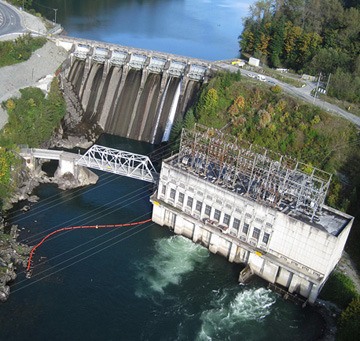VICTORIA – When Christy Clark became premier in 2011, one of her first priorities was to delay steep increases in BC Hydro rates.
BC Hydro was heading to the B.C. Utilities Commission to apply for rate increases totalling 32 per cent over three years. This, obviously, was a problem for an unelected premier whose single message was that she was good for families, and who faced an election in two years.
The government’s Mr. Fix-It, Rich Coleman, first tried to delay a couple of expensive seismic upgrades, adding to the long history of political fiddles that pushed off expensive problems. BC Hydro’s engineers soon convinced him that if the creaky old Ruskin and Campbell River dams were to bust in a quake, it wouldn’t be good for families downstream.
Coleman scraped up some internal savings in the vast utility and met Clark’s pre-determined target of keeping rate increases below four per cent in the pre-election period. Mission accomplished, as George W. Bush might have said.
Then last week, an August working paper on the need for BC Hydro rate hikes was leaked. It showed BC Hydro making a case for new increases totaling 26 per cent over two years. The leak came via the Canadian Office and Professional Employees local 378, the BC Hydro inside staff union that has a history of mostly juvenile attacks on the B.C. Liberal government.
Bill Bennett, the current energy minister, spent the next couple of days repeating to anyone who would listen that this initial proposal had already been rejected, and that work was well along to make the rate increase more palatable. Perhaps it’s back to where it was in 2011.
COPE 378 and the NDP played their rehearsed roles. Both tried to blame the situation on private power contracts. The union and its political front are less concerned about rising power bills than they are about holding onto the state monopoly on electricity generation.
Energy industry lawyer David Austin calculates that of the proposed 26.4-per-cent increase, about 3.5 per cent can be attributed to BC Hydro buying power from private sources, at prices competitive with new public power sources such as the Site C dam. Most of it comes from the overdue repairs to those old dams, other costly projects including the addition of turbines to two Columbia River dams, and deferred debt from previous political meddling.
In August I reported that as many as 20 of BC Hydro’s existing private power purchase contracts will be cancelled or deferred. This was also seized upon to portray private power as the root of all evil, both financially and environmentally.
In fact the attrition rate on these projects has always been about one out of three. This is what happens when the risks of expanding the provincial electrical grid are shared with private investors.
These run-of-river and wind projects were promoted to maximize clean energy sources, as well as to spread the grid to remote areas. This was Gordon Campbell’s climate change strategy.
Then came the gas boom. Clark seized upon liquefied natural gas exports as the key to future prosperity, and the government soon declared burning gas “clean” as long as it facilitates LNG production.
Bennett now acknowledges that gas-fired power plants are an option for the future. They are cheaper than hydro, small or large.
Bennett’s two tasks are to supply industry with cheap power and get consumer rates under control. It looks as if the gas is being turned up, and Site C is moving to the back burner.
Tom Fletcher is legislature reporter and columnist for Black Press and BCLocalNews.com
